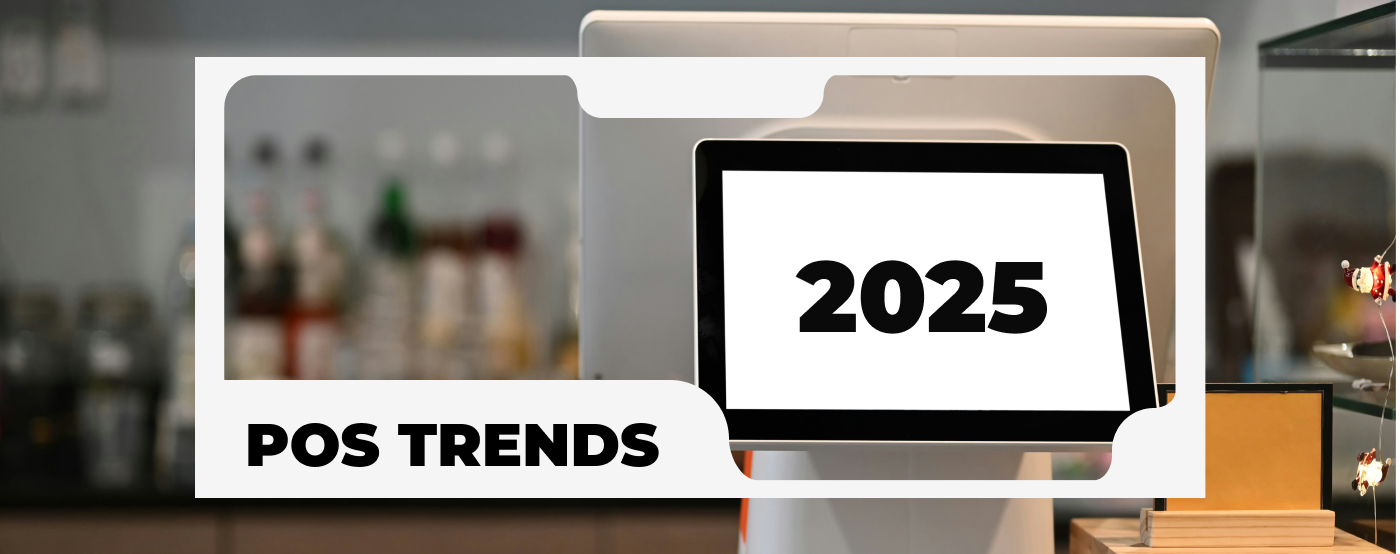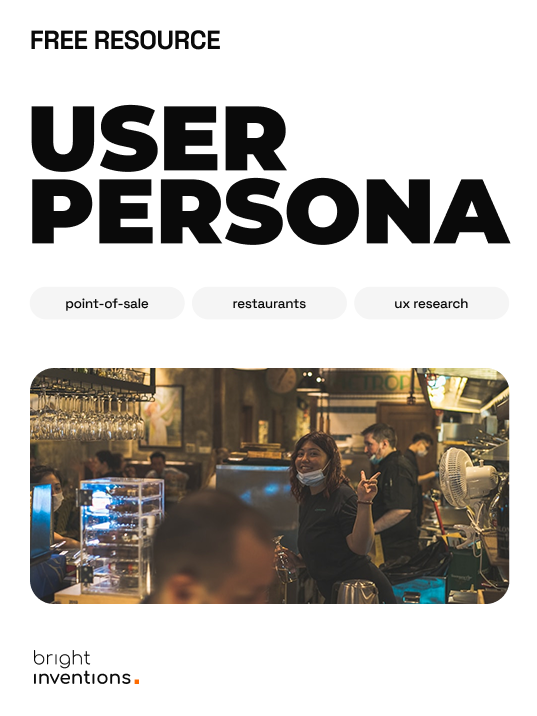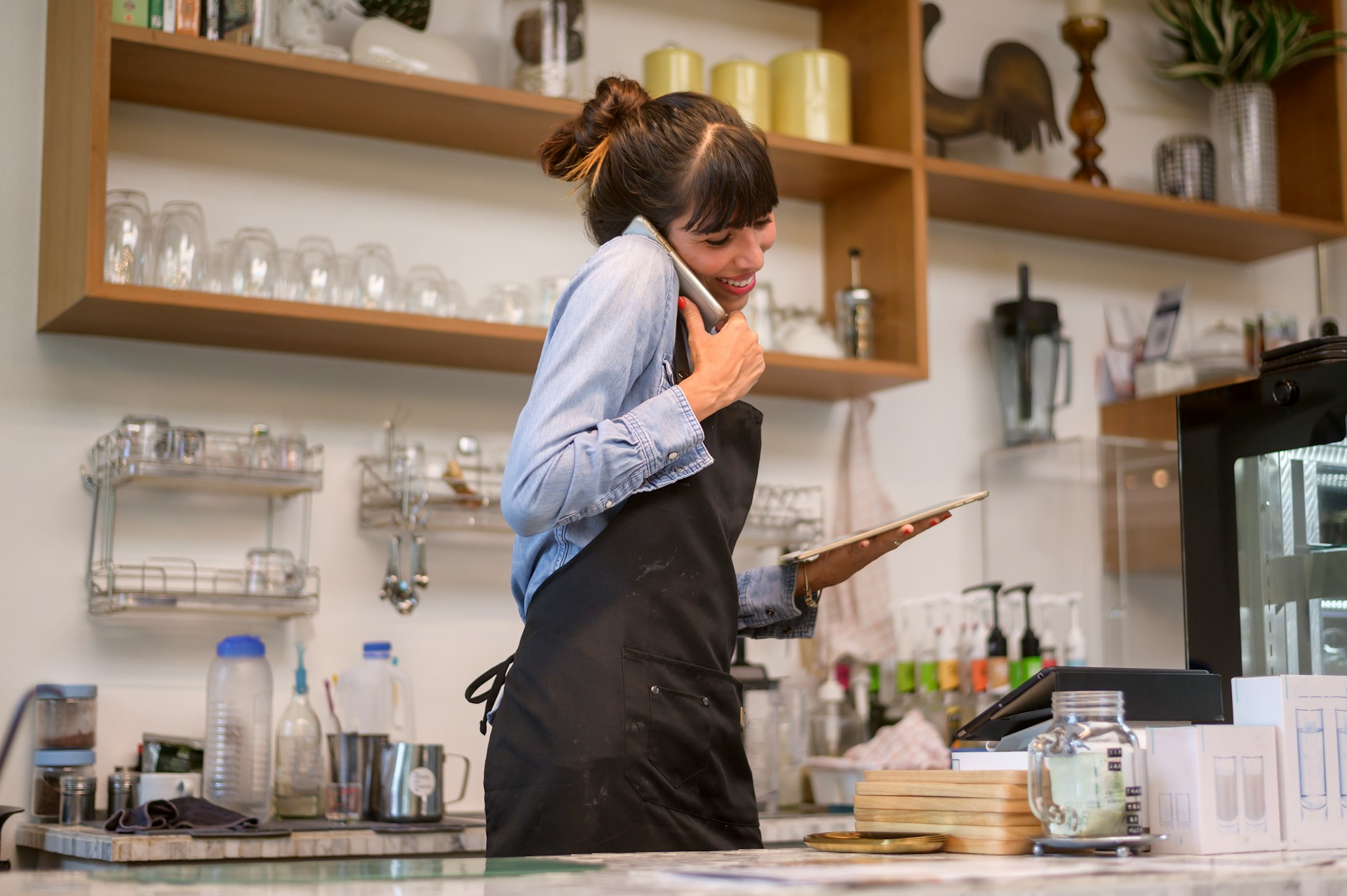10 Point-of-Sale Trends for 2025
From empowering customers in the checkout process to providing managers with tools to manage multiple devices, and even reducing the number of devices cluttering kitchens, hotels, and stores. Learn top technological pos system trends shaping the future of point-of-sale systems in hospitality and retail.

Contents (POS software trends):
The continuous rise of QR code ordering as a response to restaurant staff shortages
Bill splitting in clients' hands during payment
Changing waitstaff and kitchen communication with the POS Kitchen Display System
POS Hardware decluttering of restaurant, retail, and hotel counters
Managing devices integrated with POS using MDM (Mobile Device Management)
Adding work management features to the POS system
AI-powered POS: Using AI for analytics and inventory
Personalized coupon marketing based on POS system data
The continuous rise of cloud-based Point of Sale systems
The continuous rise of QR code ordering as a response to restaurant staff shortages
QR codes became popular in restaurants during the pandemic, initially serving primarily to present menus in a digital format. Years have come by and in 2024 many restaurants still mostly use it to display the menu.
Looking ahead, 2025 might mark a significant shift as the hospitality industry begins to explore the broader potential of QR codes. One notable application is self-ordering. Customers can scan a QR code with their mobile device, leading them to a mobile-friendly website where they can place orders.
However, QR codes shouldn’t completely replace staff interaction. Customers still value a personalized touch and may expect to discuss their orders with waitstaff rather than being greeted solely by a QR code on the table.
A survey by investment bank William Blair highlights mixed opinions on QR code ordering. Over half of respondents indicated they enjoy using QR codes for ordering and payment at dining establishments:
However, a significant portion of respondents (47%) expressed discomfort when it comes to using QR codes for tasks like accessing, ordering and making payments.
Older users, in particular, are less receptive to the technology. The survey found that 65% of individuals over the age of 60 reported discomfort with QR codes.
Bill splitting in clients' hands during payment
It's been a POS trend growing up for years, widely seen also in 2024. Yet there is still a potential for bill split to grow. And we're not talking about separate mobile app enabling diners to share the bill, POS solution vendors should incorporate this option into their POS system.
Therefore, in addition to QR code ordering, restaurants can offer customers the ability to split their bills independently. For instance, customers can scan a dedicated QR code to access their bill and divide costs among themselves. The split information is then sent directly to the POS system, enabling waitstaff to finalize mobile payment without manual calculations.
This feature (and one of the key sales trends) simplifies bill splitting, significantly reducing the workload on already busy staff. Customers have full control over how they want to divide the bill, while the POS system handles the calculations, ensuring accurate amounts. The waitstaff’s role is streamlined to simply collecting the split payments.
Changing waitstaff and kitchen communication with the POS Kitchen Display System
Imagine a POS software centered around a screen in the kitchen that instantly displays a new order as soon as it's processed by the waitstaff, accompanied by a clear sound signal to notify busy kitchen staff. With just a swipe, kitchen staff can adjust the order or update its status, for example, from "In Preparation" to "Ready to Serve." This is the technology that should be a part of any advanced POS.
Although this technology isn't new, many restaurants still rely on a traditional POS with printed kitchen receipts. KDS doesn't have to fully replace these receipts; in fact, they can still be invaluable in certain situations. For example, when the kitchen prepares multiple similar orders for different tables, printed kitchen receipts can still accompany the dishes, helping waitstaff quickly identify and deliver the correct meals.
Get inspired by the global POS system that implemented the Kitchen Display System as one of its features.
POS Hardware decluttering of restaurant, retail, and hotel counters
The fact that modern point-of-sale software is connected to many devices is both a benefit and a challenge. For example, taking care of multiple devices provided by different food delivery parties brings more responsibility to already busy waitstaff.
Building a custom point of sale allows all orders, whether from in-house dining, phone orders, delivery apps, or a white-label application, to be transferred into a single POS system. This means waitstaff can view and manage all orders on one device, aligning with the growing trend in POS implementation aimed at eliminating the unnecessary POS devices often provided by third-party systems such as Just Eat, Uber Eats or Deliveroo.
Check the example of POS and food delivery apps integration which helped eliminate device declutter in restaurants.
Struggling to understand your POS users?

Managing devices integrated with POS using MDM (Mobile Device Management)
Even if all food delivery orders are synced to a single device (especially in mobile POS systems), businesses still face the challenge of managing multiple hardware components, from tablets, terminals and printers to kiosks and even electronic scales in some cases.
2025 should be the year to simplify device management and therefore smooth business operations. One solution is for POS vendors to develop custom MDM platforms. These allow managers to ensure mobile POS devices are running the latest software, maintain secure connections, and even block unauthorized websites.
MDM protects devices from threats, streamlines updates and configurations, and ensures devices are used strictly for their intended purposes, making business operations more efficient and secure for small businesses and enterprises.
Adding work management features to the POS system
While it might seem like a simple to-do list, this tool is designed to help manage the busy tasks of waitstaff more effectively. Modern POS systems should empower managers to create and assign critical tasks to specific employees.
For example, scheduling routine duties like cleaning fridge number 2 every Monday, ordering new packaging every Friday, or simple daily checks such as ensuring the bathrooms are clean every hour. These tasks should be visible on waitstaff mobile devices, allowing them to quickly mark tasks as completed. This keeps managers informed about progress in real-time.

AI-powered POS: Using AI for analytics and inventory
With artificial intelligence in custom POS software development, restaurants can track customer preferences, predict demand, and optimize stock levels to reduce waste. AI-powered analytics allow businesses to make data-driven decisions about menu offerings, pricing, and loyalty programs improving overall efficiency and customer experience. In inventory management, AI-driven POS systems help monitor stock in real-time, quickly informing about the need for ingredients reorder.
Personalized coupon marketing based on POS system data
By leveraging POS data linked to loyalty programs, businesses can offer truly customized receipts. These programs, which often connect a customer’s shopping history to their phone number or account, allow for personalized offers tailored to the customer’s preferences. For example, using POS data analytics, you can present targeted discounts on items a customer is likely to purchase at the optimal time.
The key lies in delivering the right message at the right time. Similarly, loyalty apps can go beyond offering general discounts to present personalized deals that resonate with individual shoppers, thereby enhancing engagement and driving repeat purchases.
Scan & go with your device
Self-checkout kiosks have been one of the latest POS trends, growing for several years. According to RBR Data Services, nearly 700,000 kiosks are expected to be installed worldwide by 2028. McDonald's alone has already deployed more than 130,000 units.
The trend continues to evolve, with self-checkout systems becoming increasingly independent. The latest innovation might even remove the need for dedicated self-checkout kiosks in stores or restaurants. Instead, customers can now use their own mobile devices to scan items and complete payments directly.
Take MishiPay as an example – a company that might change the retail industry by developing self-checkout solutions that are accessible directly on users' mobile devices.
The continuous rise of cloud-based Point of Sale systems
While on-premise systems continue to dominate the restaurant POS market, cloud-based systems are the fastest-growing segment, with a projected compound annual growth rate (CAGR) of 9.2% through 2030. The global cloud POS market is expected to exceed $30 billion by 2031, reflecting nearly 25% growth since 2022.
For POS vendors yet to offer cloud functionality, migrating to the cloud should be a top priority in 2025.
Get inspired by a revamping story of a 30-year old legacy restaurant POS.
Which POS technology trends will change the restaurant industry, hospitality and retail?
2025 is expected to provide some clarity about the POS industry. Will cloud-based POS systems dominate the majority of the market? These systems offer unparalleled flexibility, allowing businesses to adapt quickly to changing market demands and customer expectations.
Will mobile payment systems become even faster and more user-friendly, incorporating features like self-bill-splitting? We can't wait to see all of these POS software trends in action!

